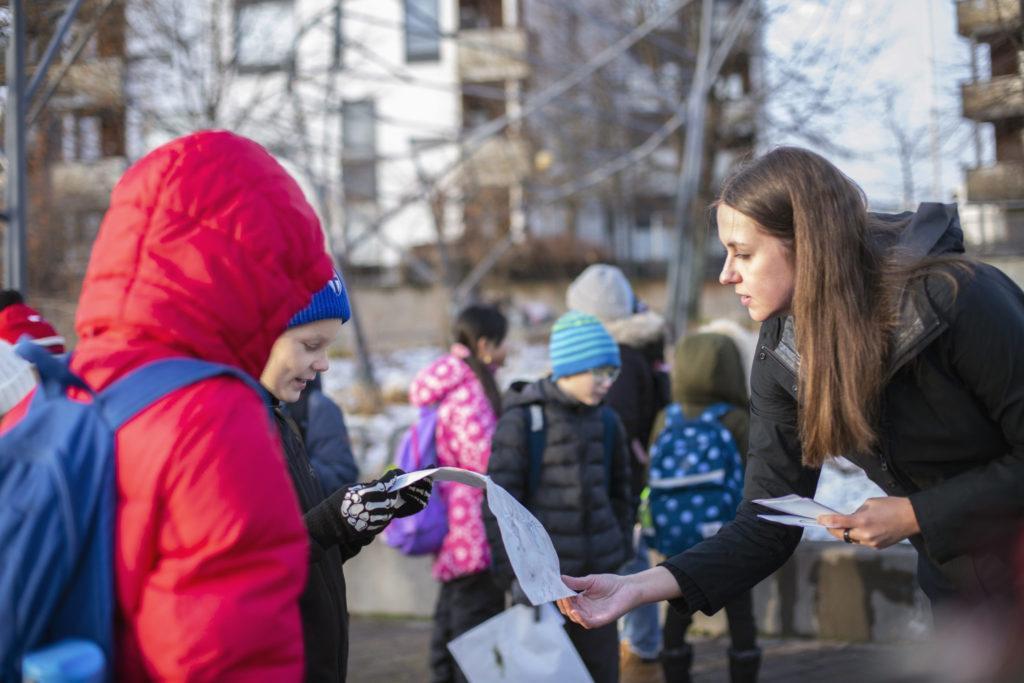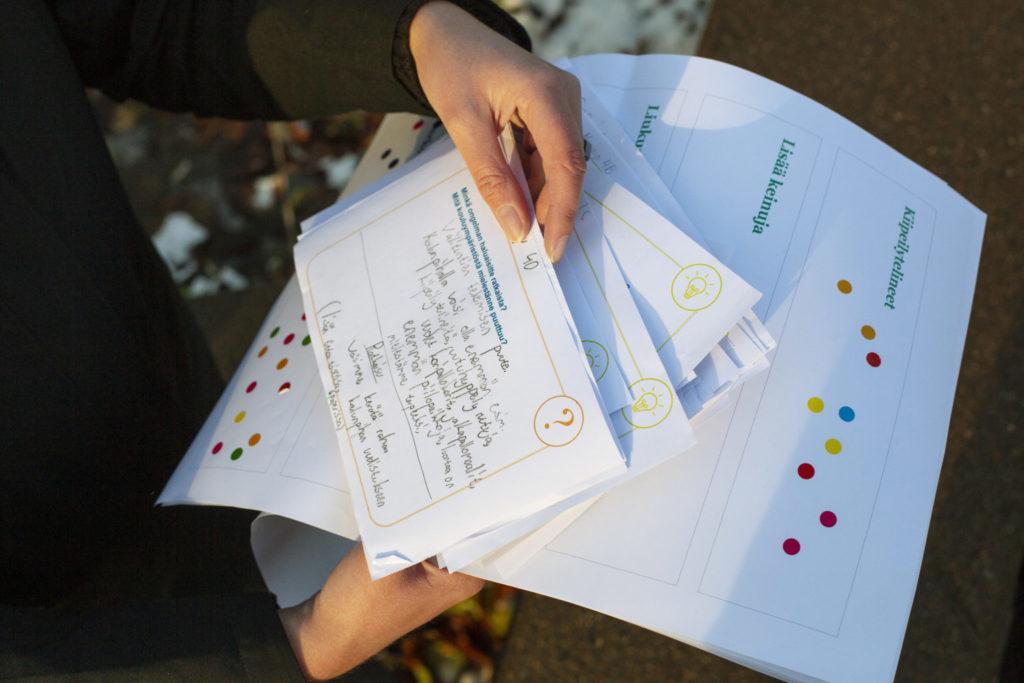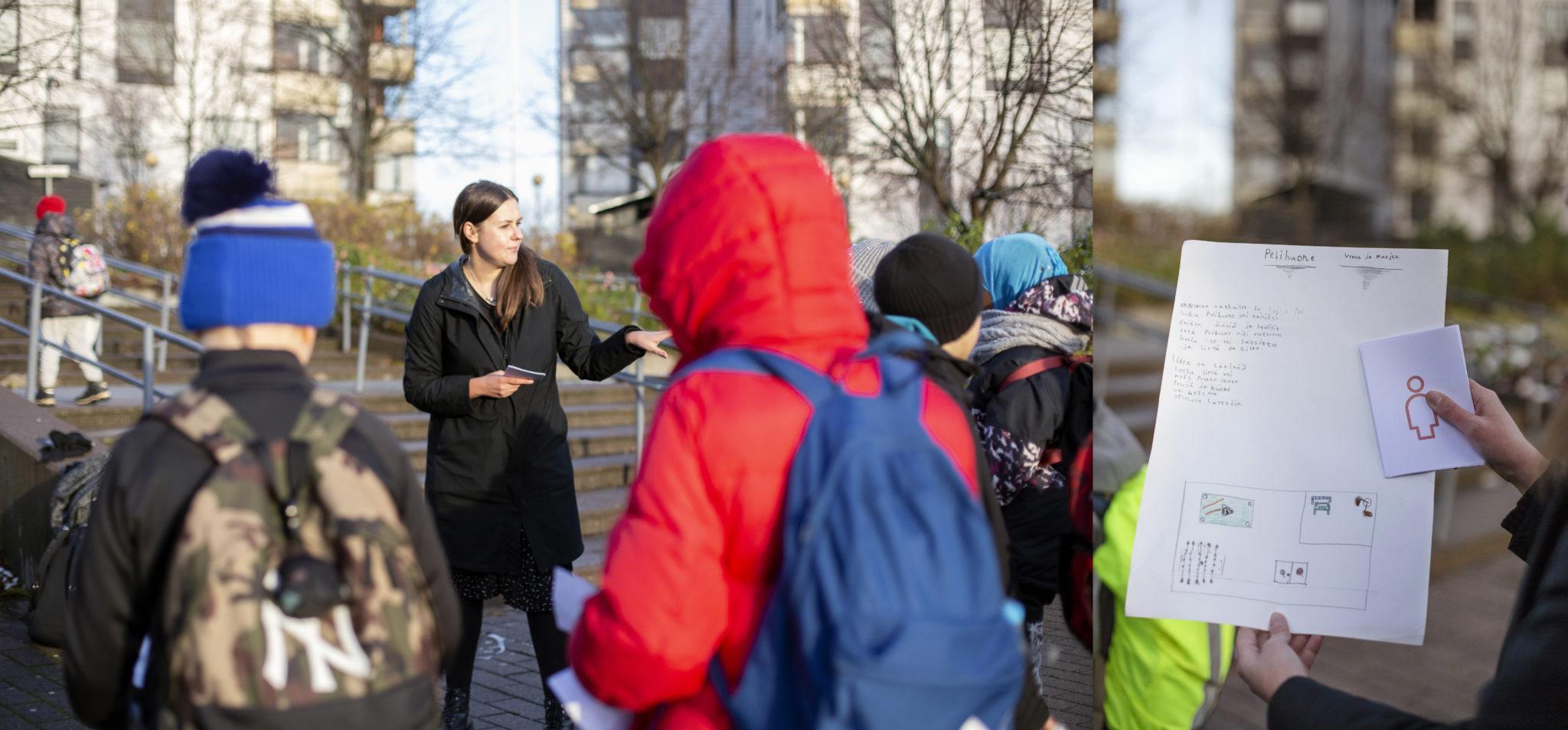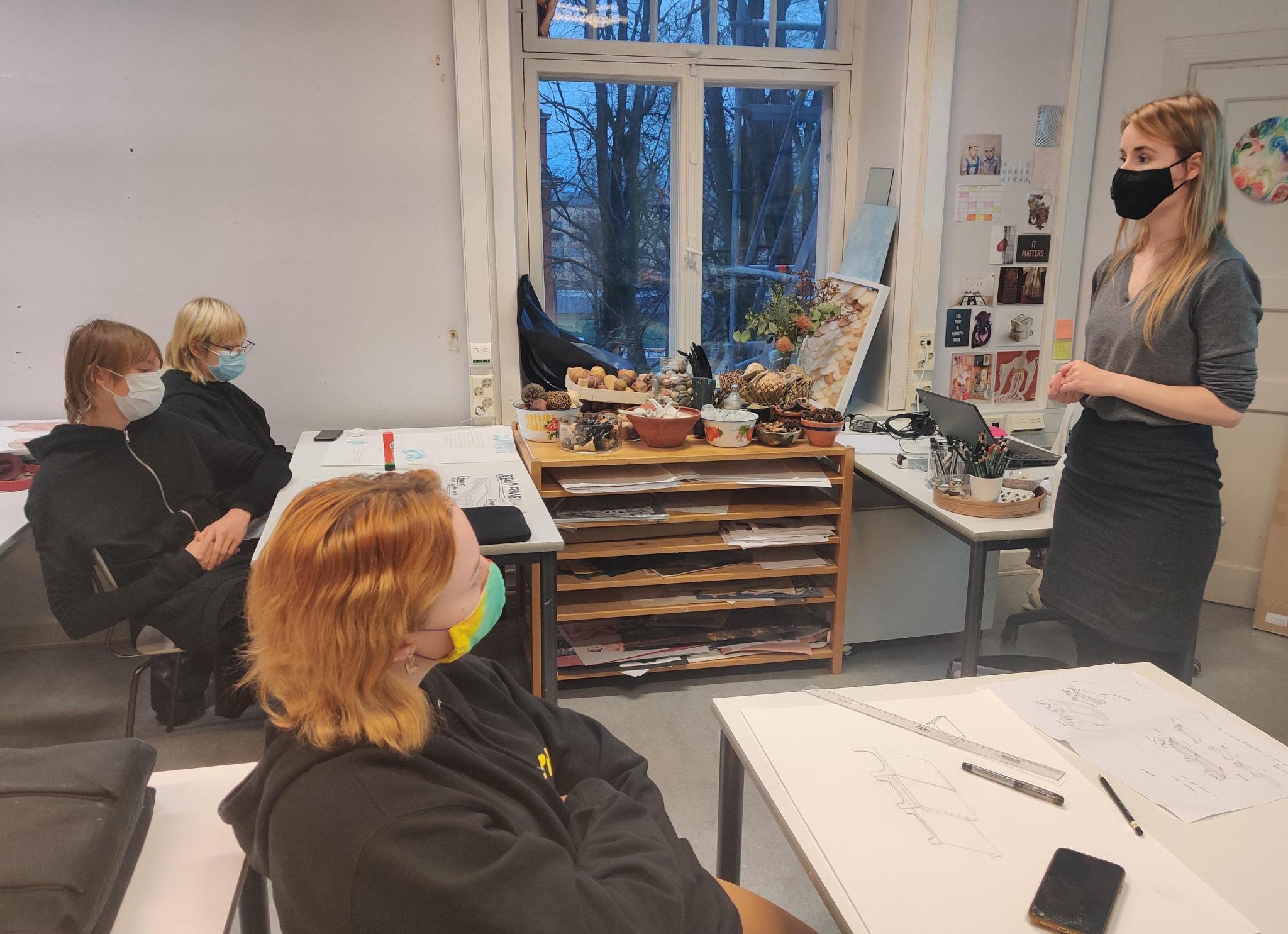Designer Linda Vanni visits Aurinkolahti comprehensive school

The fourth-graders of Aurinkolahti comprehensive school, located in Helsinki’s Vuosaari, have been divided into two groups. They are participating in a nature-themed course for their environmental studies. One of the groups heads to the small forest in Suorttio, while the other group stays in the urban environment of Aurinkolahti to discuss their surroundings.
Who is using this environment? What can I see around me? What can I hear? How do I feel? The groups comparing natural and urban environments are guided by visiting designer Linda Vanni and teachers Sanni Koppanen and Heidi Holopainen from Aurinkolahti comprehensive school. The 12-lesson course called Designing great surroundings, planned by Vanni, teaches the pupils about environmental issues through co-design and service design.
After observing their surroundings, the groups apply what they have learned to their school environment. The pupils identify challenges in the environment and work together to develop better solutions. The solutions are still a mystery as there are still many steps in the process, including listening to everyone’s opinions and voting for the best ideas.
Coordinated by Ornamo and the Design Museum, the Designakatemia brings professional designers to Helsinki schools, developing and extending the methods and tools of design learning. Particularly used in designing services and products, co-design is a key tool of professional designers.
At schools, design learning means using observations and brainstorming to obtain information and design products or solutions. It means experimenting and testing different ideas, refining them and assessing and analysing the activities and the results. The design process helps teach the pupils how to understand the bigger picture, develop their thinking and express their ideas.
“One of the key elements in design learning is to challenge the pupils to critically examine the consumption and production habits of people from the standpoints of justice, ethical questions and sustainable development. We believe that the project in the nature-themed course helped the pupils understand how the design process can be used to solve problems and develop a better environment,” says Vanni.
The pupils of Aurinkolahti created a vision for a great schoolyard. According to the participants, the main problem in the current schoolyard is that the pupils get very little exercise. Active, young pupils have to stand in line for a turn at the swings and they have not been taken into consideration when planning the layout and equipment on the schoolyard. The fourth-graders also felt that the schoolyard should have more natural features, such as trees, flowers and nesting places for birds.
After brainstorming, the ideas were compiled into posters. In the posters, each group presented a problem they found important to address, introduced their solution and explained their reasoning for the solution. The posters and the 3D models for a great schoolyard prepared in the final lesson were assembled into an exhibition. Other pupils were offered sticky notes so that they could participate in the co-design process. The pupils also discussed ways to realise their ideas by applying for the city’s Ruuti allowance, for example.
“Design learning offers a great opportunity for phenomenon-based learning. The phenomena discussed originate from the goals in the curricula, but the tools of design learning enable us to combine them with current issues and the perspective of thinking about the future. We observe our environment critically but empathetically, always trying to see things from a designer’s point of view. That places the issues in a natural context and makes it easier to understand their significance in the bigger picture,” explains Vanni.
“We feel that the lessons were a success and that the pupils were excited about the work. The students particularly felt a sense of achievement when working with their hands and brainstorming. At the end of the lessons, the pupils compiled their observations about improving the schoolyard. We plan to present their findings to the school management so that the schoolyard could be made more engaging and comfortable for the pupils,” say teachers Sanni Koppanen and Heidi Holopainen from Aurinkolahti.
Aurinkolahti comprehensive school is part of the Alvar Aalto school network. Established in 2019, the Alvar Aalto network is a cooperation model designed to promote architecture and design learning in schools. Linda Vanni works as a designer at the Helsinki-based Pentagon Design agency.
Text: Petra Ilonen




